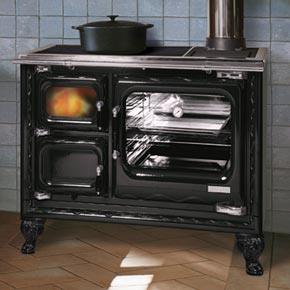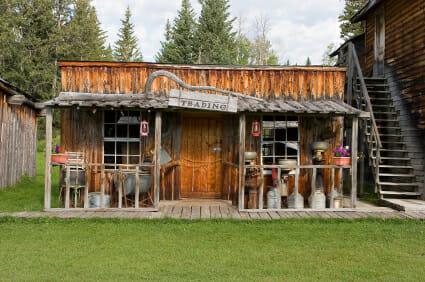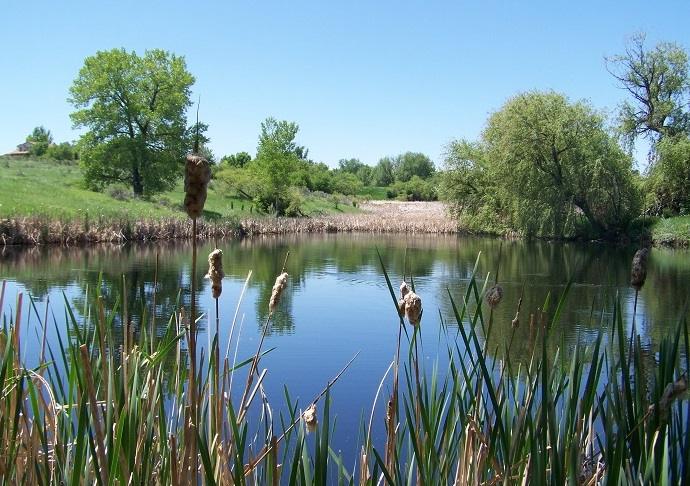 In our last episode, we sung the praises of the old-fashioned wood-heating stove. But this was not because of its ability to keep a home comfy and warm, but rather because of how easily it can be adapted for use as a cooking stove. Cooking with wood really is good, and a regulation wood stove can help keep an off-the-grid family’s stomachs full and satisfied throughout the course of a long cold winter.
In our last episode, we sung the praises of the old-fashioned wood-heating stove. But this was not because of its ability to keep a home comfy and warm, but rather because of how easily it can be adapted for use as a cooking stove. Cooking with wood really is good, and a regulation wood stove can help keep an off-the-grid family’s stomachs full and satisfied throughout the course of a long cold winter.
However, while it certainly is possible to do some serious cooking on a wood-burning heat stove, there is actually a much better and more specialized option available – the wood cooking stove. Making due with a regular wood stove is a makeshift operation, but wood cookstoves are designed to occupy kitchens and provide families with all the delicious home-cooked food they could ever want or need. Meats, vegetables, desserts, breads, stews, soups, pastas, rice, and complex gourmet dishes guaranteed to delight each and every discriminating palate can all be prepared efficiently and deliciously on or in a wood cookstove, and if not for that extra added hint of wood smoke flavor, no one consuming these culinary concoctions would ever have any idea where they came from (and before you become concerned, rest assured that this additional flavor boost is a good thing, and it is one of the main reasons why those who make the switch to wood cookstoves hardly ever regret their choice).
Wood cookstoves are highly versatile, and families surviving off the grid have been relying on them to meet their food preparation needs since the days before there even was such a thing as the grid. Design tweaks notwithstanding, wood cookstoves manufactured in 2013 are essentially the same as the units that were produced back in the 1880s, which just goes to show how wise that old adage about not messing with perfection really is.
The Wood Cookstove: Up Close And Personal
Wood cookstoves normally include the following features or compartments:
- Firebox: The beating heart of any wood stove, in a cookstove it will generally be installed on the left side of the unit. These boxes are smaller than what would be found in the typical wood-burning heat stove, but they are designed to kick out concentrated heat bursts that will heat both baking ovens and stovetops to the temperatures required to really get things going at mealtime. In order to control the heat output of the firebox, air vents can be opened and closed as needed to stimulate or stifle a fire’s intensity.
- Baking oven: It will be found side-by-side with the firebox in most stoves, but in some models, the oven component is installed directly below the firebox for highly effective top-down cooking. Baking ovens are heated indirectly on the (left) firebox side and also from the top down, as firebox emissions circulate repeatedly in the space between the top of the baking oven and the stove’s upper cooking surface. With most units, it will be necessary to use an oven thermometer to keep track of baking temperatures.
- Stovetop: Covering both the firebox and the oven (or possibly just the firebox in vertically arranged models), the wood cooking stove stovetop does not have burners per se but does have removable lids that can be taken out when the firebox or the top of the oven needs cleaning, or when there is a desire to grill something directly over an open fire.
- Water reservoir: This will be located on the right in the wood cookstoves that have one (most do but some do not), beside the central baking oven. In most stoves, the reservoir is used to store and heat water for later use, but some setups will allow water to be circulated continuously through this section before it is warmed and released into a separate storage tank that essentially functions like a hot water heater. An average water reservoir might hold something in the neighborhood of five gallons, and it should be kept at least partially full whenever the stove is in operation to prevent heat damage.
- Warming oven: A neat addition to the wood cookstove repertoire, warming ovens are located directly above the stovetop and when closed can produce temperatures in the 150⁰ F range, perfect for defrosting frozen foods, allowing bread to rise, or helping to keep already prepared dishes warm until supper can be served. The doors of the warming oven can be opened and closed as needed to regulate interior temperatures.
- Chimney pipe: Chimney pipe flow in a wood cookstove is regulated by the oven damper, which, when closed, restricts or blocks the release of heat and smoke up the chimney. This damper is controlled by a lever or sliding mechanism; when the stove is being fired up for use or is actually in use, keeping the damper partially or completely closed will force the heat of the fire to circulate throughout the interior of the stove – thereby heating the oven and the stovetop – before it is finally released up the chimney.
The compartmentalization of the wood cookstove promotes high efficiency through effective division of labor. This is why this type of kitchen stove has been so popular for so long among real pioneers and those with the pioneering spirit. The skills required to cook delicious dishes on a wood cookstove must be learned, but they can be grasped relatively quickly when a common-sense approach is combined with a cheerful trial-and-error methodology.
Encyclopedia filled with traditional country skills!
“Now You’re Cooking!”: Tips For Aspiring Wood Cookstove Chefs
No matter what kind of food you might want to prepare, wood cookstoves produce more than enough heat to get the job done. But there are some issues with heat distribution, which is uneven and in some cases can be a little unpredictable. For example, baking ovens tend to be hotter – sometimes much hotter – on the side next to the firebox and also in the upper part of the oven thanks to the heat that circulates under the stovetop just above, while stovetops inevitably get cooler the farther away you move from the firebox.
The latter problem is not necessarily difficult to solve; moving food away from the area directly above the firebox is the equivalent of turning the heat down to a lower setting on an electric stovetop, so most who are new to wood cookstove food preparation will be able to figure out how to handle the temperature differentials on their stovetops in a relatively short amount of time. And if an even lower temperature is desired at a particular location, a trivet can be added that will lift a pot or pan up off the stove’s surface. When the oven damper is closed and heat is allowed to circulate, a stove’s temperatures will naturally rise to cooking levels, and from that point on, a wood cookstove stovetop will be able to match the performance of an electric or gas unit with little difficulty – just don’t put a pot filled with food in one place and walk away. You need to pay attention so you can rearrange things as needed.
With baking ovens the situation is similar; uneven heat distribution only becomes a problem if you put a loaf of bread, a roast, or a casserole in the oven and then leave it there without ever changing its position. Generally the best way to proceed is to start out with your cooking pans as far away from the firebox as you can get them, on racks that are set as far below the top of the oven box as you can get. Then you can simply rotate your pans as they are cooking or maybe cover them for part of the cooking circle, to ensure that nothing burns and that everything gets heated evenly. This is one area where things can get a little unpredictable, however, as many wood cookstove owners report hot spots inside baking ovens in unlikely and surprising places. So when you first start using a new wood cookstove, you will have to monitor your baking carefully to make sure that you don’t have this problem.
Starting from scratch, it can take up to an hour to get a fire going that will be hot enough to actually cook anything. Once these temperatures are achieved, the heat and intensity of the fire can be managed by opening and closing the oven damper (opening it makes the stove cooler), opening and closing the air vents that feed oxygen to the fire, and obviously by adding more wood once the initial supply burns down. If your fire burns long enough and hot enough for a good bed of coals to accumulate in the bottom of the firebox, this will usually provide a steady supply of cooking heat for a long enough period of time to prepare most dishes.
When We Say Clean It, We Mean It!
To ensure consistent performance, wood cookstoves must be cleaned frequently. This will involve removing and emptying the ash tray below the firebox; lifting the lids on the stovetop so you can sweep and/or scrape away the fly ash and creosote that accumulates on top of the oven compartment; cleaning out the inside of the firebox; emptying and scrubbing the water reservoir; checking the inside of the chimney for creosote, and scrubbing or sanding it away if you find it; and vigorously scouring the stove top, rear splashback, and lower part of the chimney to remove all grit, grime, and dirt.
Basically any cleaning tools used on metal surfaces will work well to accomplish these various tasks, and many newer stoves include special tools that are made for just such a purpose. If you have a cast-iron stove (still the most commonly used construction material), after cleaning and before the next firing cycle you will need to coat the stovetop with a thin layer of vegetable oil to season it, just as you would do with cast-iron cooking pots and pans. Rust is a significant issue with cast-iron, which is why you should take precautions to protect the stovetop in particular from the deleterious effects of contact with moisture. Stainless steel and other materials are sometimes used to build modern wood cookstoves, so if you want to avoid a potential rust problem, you could always go with an alternative to the traditional cast-iron.
Many will recommend that wood cookstoves be cleaned three or four times a year, but really it should be based on the results of constant visual inspection – in other words, check things often, and when you see something that looks grungy, greasy, cruddy, filthy, foul, or skuzzy, the time to take action is right then and there. Wood stove maintenance is not compatible with laziness, and in addition to affecting cooking performance, allowing your stove to get dirty and stay that way could very well result in a nasty and destructive fire.
In Any Cost/Reward Calculation, Wood Cookstoves Come Up A Winner
Outstanding characteristics aside, there are a few issues that can make wood cookstoves a less-than-ideal choice in some situations and for some people – the way they heat up the kitchen (good in the winter but bad in the summer), their need for constant and regular cleaning, the fact that they cannot provide heat on demand like a gas or electric stove, and the high cost of a brand new unit (a state-of-the-art model will likely cost you between $1,500 and $3,500). But really, these are mostly inconveniences rather than deal killers – except perhaps for the price, and that shouldn’t be much of a problem if you are willing to save for awhile. The bottom line is that there is no drawback to a wood cookstove that should discourage the hardy and adventurous in the least, and if you are an off-the-gridder, then by definition you are as hardy and adventurous as they come.
From an off-the-grid perspective, wood cookstoves are the perfect cooking technology. And in addition to their superb functional abilities, their timeless and rugged design gives them an alluring rustic aura and an authentic charm that will enhance the appearance of any home or castle. A good wood cookstove won’t come cheap, that is for sure, but if you are truly excited about the possibilities of cooking with wood and are willing to make the effort to do it right, the cash you put down to purchase a high-quality wood cookstove could end up being one of the very best investments you’ve ever made in your life.












